Hiresh Gupta
Towards Realistic Generative 3D Face Models
Apr 24, 2023Abstract:In recent years, there has been significant progress in 2D generative face models fueled by applications such as animation, synthetic data generation, and digital avatars. However, due to the absence of 3D information, these 2D models often struggle to accurately disentangle facial attributes like pose, expression, and illumination, limiting their editing capabilities. To address this limitation, this paper proposes a 3D controllable generative face model to produce high-quality albedo and precise 3D shape leveraging existing 2D generative models. By combining 2D face generative models with semantic face manipulation, this method enables editing of detailed 3D rendered faces. The proposed framework utilizes an alternating descent optimization approach over shape and albedo. Differentiable rendering is used to train high-quality shapes and albedo without 3D supervision. Moreover, this approach outperforms the state-of-the-art (SOTA) methods in the well-known NoW benchmark for shape reconstruction. It also outperforms the SOTA reconstruction models in recovering rendered faces' identities across novel poses by an average of 10%. Additionally, the paper demonstrates direct control of expressions in 3D faces by exploiting latent space leading to text-based editing of 3D faces.
Form2Seq : A Framework for Higher-Order Form Structure Extraction
Jul 09, 2021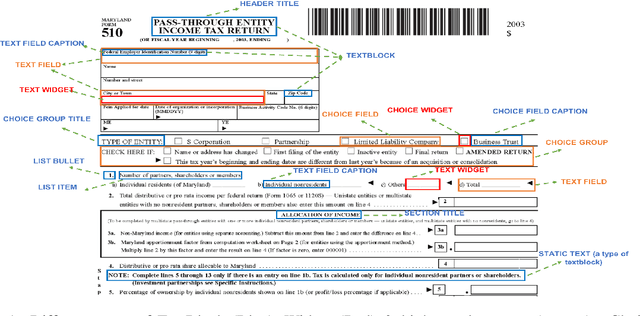

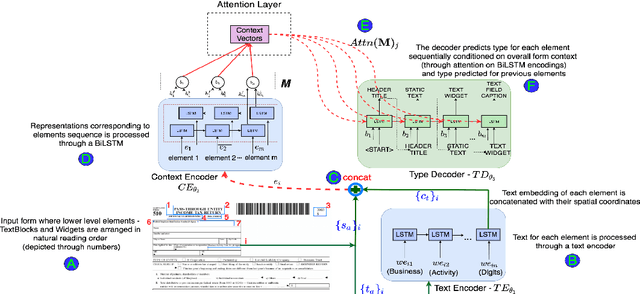
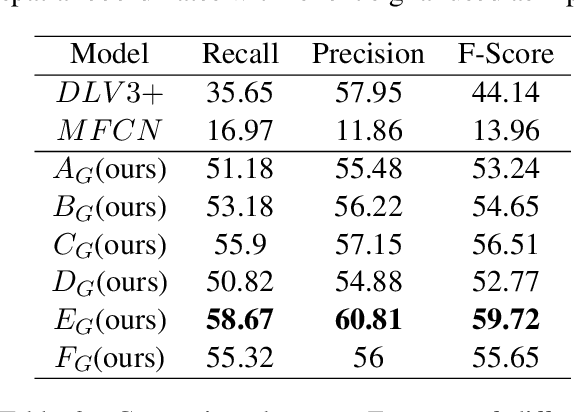
Abstract:Document structure extraction has been a widely researched area for decades with recent works performing it as a semantic segmentation task over document images using fully-convolution networks. Such methods are limited by image resolution due to which they fail to disambiguate structures in dense regions which appear commonly in forms. To mitigate this, we propose Form2Seq, a novel sequence-to-sequence (Seq2Seq) inspired framework for structure extraction using text, with a specific focus on forms, which leverages relative spatial arrangement of structures. We discuss two tasks; 1) Classification of low-level constituent elements (TextBlock and empty fillable Widget) into ten types such as field captions, list items, and others; 2) Grouping lower-level elements into higher-order constructs, such as Text Fields, ChoiceFields and ChoiceGroups, used as information collection mechanism in forms. To achieve this, we arrange the constituent elements linearly in natural reading order, feed their spatial and textual representations to Seq2Seq framework, which sequentially outputs prediction of each element depending on the final task. We modify Seq2Seq for grouping task and discuss improvements obtained through cascaded end-to-end training of two tasks versus training in isolation. Experimental results show the effectiveness of our text-based approach achieving an accuracy of 90% on classification task and an F1 of 75.82, 86.01, 61.63 on groups discussed above respectively, outperforming segmentation baselines. Further we show our framework achieves state of the results for table structure recognition on ICDAR 2013 dataset.
Multi-Modal Association based Grouping for Form Structure Extraction
Jul 09, 2021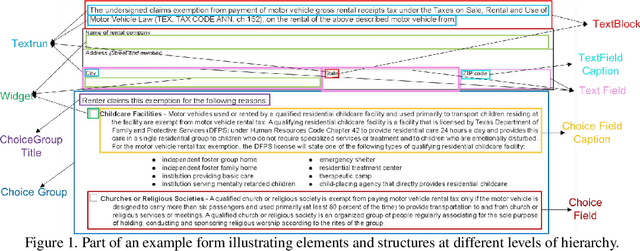
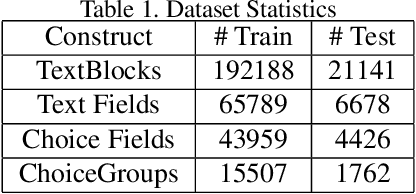


Abstract:Document structure extraction has been a widely researched area for decades. Recent work in this direction has been deep learning-based, mostly focusing on extracting structure using fully convolution NN through semantic segmentation. In this work, we present a novel multi-modal approach for form structure extraction. Given simple elements such as textruns and widgets, we extract higher-order structures such as TextBlocks, Text Fields, Choice Fields, and Choice Groups, which are essential for information collection in forms. To achieve this, we obtain a local image patch around each low-level element (reference) by identifying candidate elements closest to it. We process textual and spatial representation of candidates sequentially through a BiLSTM to obtain context-aware representations and fuse them with image patch features obtained by processing it through a CNN. Subsequently, the sequential decoder takes this fused feature vector to predict the association type between reference and candidates. These predicted associations are utilized to determine larger structures through connected components analysis. Experimental results show the effectiveness of our approach achieving a recall of 90.29%, 73.80%, 83.12%, and 52.72% for the above structures, respectively, outperforming semantic segmentation baselines significantly. We show the efficacy of our method through ablations, comparing it against using individual modalities. We also introduce our new rich human-annotated Forms Dataset.
Document Structure Extraction for Forms using Very High Resolution Semantic Segmentation
Nov 27, 2019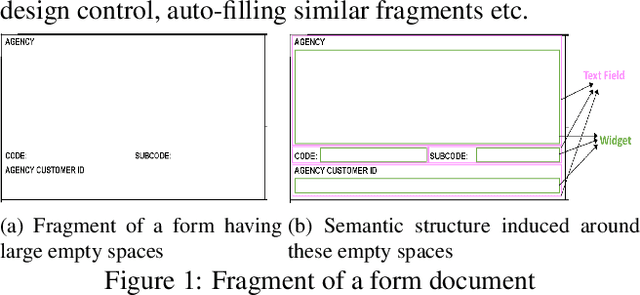



Abstract:In this work, we look at the problem of structure extraction from document images with a specific focus on forms. Forms as a document class have not received much attention, even though they comprise a significant fraction of documents and enable several applications. Forms possess a rich, complex, hierarchical, and high-density semantic structure that poses several challenges to semantic segmentation methods. We propose a prior based deep CNN-RNN hierarchical network architecture that enables document structure extraction using very high resolution(1800 x 1000) images. We divide the document image into overlapping horizontal strips such that the network segments a strip and uses its prediction mask as prior while predicting the segmentation for the subsequent strip. We perform experiments establishing the effectiveness of our strip based network architecture through ablation methods and comparison with low-resolution variations. We introduce our new rich human-annotated forms dataset, and we show that our method significantly outperforms other segmentation baselines in extracting several hierarchical structures on this dataset. We also outperform other baselines in table detection task on the Marmot dataset. Our method is currently being used in a world-leading customer experience management software suite for automated conversion of paper and PDF forms to modern HTML based forms.
 Add to Chrome
Add to Chrome Add to Firefox
Add to Firefox Add to Edge
Add to Edge